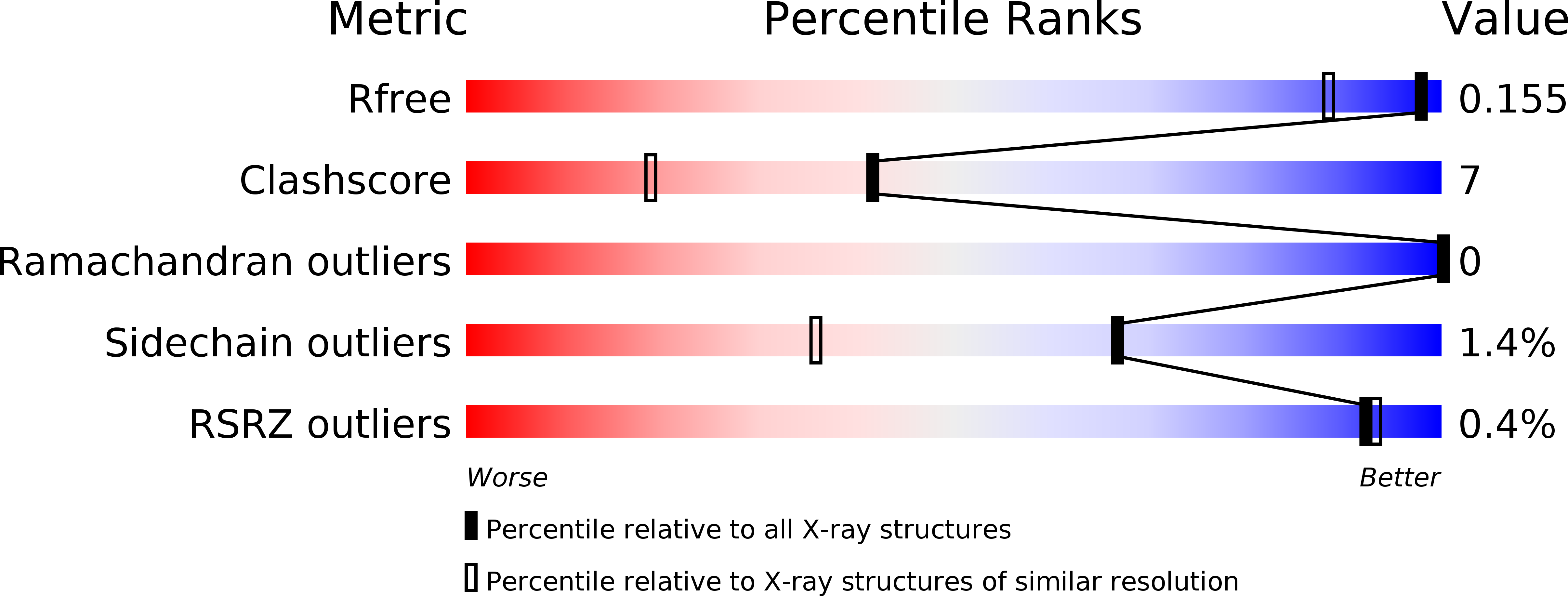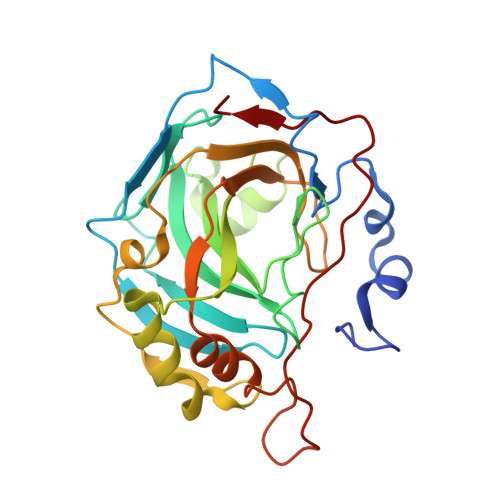Engineered Carbonic Anhydrase VI-Mimic Enzyme Switched the Structure and Affinities of Inhibitors.
Kazokaite, J., Kairys, V., Smirnoviene, J., Smirnov, A., Manakova, E., Tolvanen, M., Parkkila, S., Matulis, D.(2019) Sci Rep 9: 12710-12710
- PubMed: 31481705
- DOI: https://doi.org/10.1038/s41598-019-49094-0
- Primary Citation of Related Structures:
6QL1, 6QL2, 6QL3 - PubMed Abstract:
Secretory human carbonic anhydrase VI (CA VI) has emerged as a potential drug target due to its role in pathological states, such as excess acidity-caused dental caries and injuries of gastric epithelium. Currently, there are no available CA VI-selective inhibitors or crystallographic structures of inhibitors bound to CA VI. The present study focuses on the site-directed CA II mutant mimicking the active site of CA VI for inhibitor screening. The interactions between CA VI-mimic and a series of benzenesulfonamides were evaluated by fluorescent thermal shift assay, stopped-flow CO 2 hydration assay, isothermal titration calorimetry, and X-ray crystallography. Kinetic parameters showed that A65T, N67Q, F130Y, V134Q, L203T mutations did not influence catalytic properties of CA II, but inhibitor affinities resembled CA VI, exhibiting up to 0.16?nM intrinsic affinity for CA VI-mimic. Structurally, binding site of CA VI-mimic was found to be similar to CA VI. The ligand interactions with mutated side chains observed in three crystallographic structures allowed to rationalize observed variation of binding modes and experimental binding affinities to CA VI. This integrative set of kinetic, thermodynamic, and structural data revealed CA VI-mimic as a useful model to design CA VI-specific inhibitors which could be beneficial for novel therapeutic applications.
Organizational Affiliation:
Department of Biothermodynamics and Drug Design, Institute of Biotechnology, Vilnius University, Saul?tekio 7, Vilnius, LT-10257, Lithuania. kazokaite@ibt.lt.





















